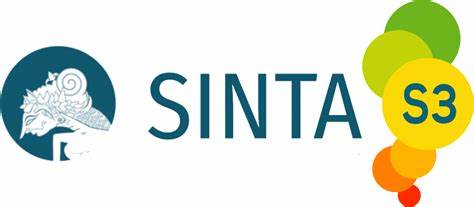UNPACKING THE IRF PATTERN: A DISCOURSE ANALYSIS OF CLASSROOM INTERACTION
A DISCOURSE ANALYSIS OF CLASSROOM INTERACTION: EXAMINING THE IRF PATTERN AT SMKN 3 KEDIRI
Keywords:
classroom interaction, IRF pattern, discourse anlysis, EFLAbstract
This research aimed to examine the Initiation–Response–Feedback (IRF) interaction pattern in a high school English classroom to determine the most effective strategies for enhancing student engagement during class and improving interactions between teachers and students. This study employed a qualitative descriptive method using classroom observation and audio recordings to examine IRF patterns. Discourse analysis was used to identify and classify each stage of the IRF structure. To obtain data, the researcher conducted classroom observations in one of the SMKN in Kediri City involving an English teacher and 35 students, this study used audio recordings to analyze discourse patterns during the lesson. Based on the results of the analysis, the student response stage is the most dominant stage with 41.38% followed by teacher initiation 34.48% and feedback 24.14%. The analysis indicates that while students actively participate, their responses are often limited to repetition rather than reflecting true comprehension. This highlights the crucial role of the teacher in facilitating meaningful classroom discourse and also the importance of students preparing themselves before receiving class material.
References
Atmojo, F. N. D., Saleh, M., & Widhiyanto, W. (2020). The The Implementation of Initiation Response Feedback (IRF) in EFL Writing Class. English Education Journal, 10(2), 225–233. https://doi.org/10.15294/eej.v10i1.34465
Coulthard, M., & Brazil, D. (1992). Exchange Structure. In M. Coulthard (Ed.), Advances in Spoken Discourse Analysis (pp. 50-78). London: Routledge.
Creswell, J. W. (2012). Educational Research: Planning, Conducting, and Evaluating Quantitative and Qualitative Research (4th ed.). Boston: Pearson Education.
Dalia, A. C., & Putra, F. R. (2024). The Initiation, Response, and Feedback (Irf) in English Language Teaching: a Literature Review. Jurnal Ilmiah Spectral, 10(1), 043-053.
Dayag, D.T., Gustilo, L. E., Flores, E.G., Borlongan, A. M., & Carreon, M. C. (2008). Classroom discourse in selected philippine primary schools. British Council
Deci, E. L., & Ryan, R. M. (1985). Intrinsic motivation and self-determination in human behavior. Plenum.
Dehalwar, K. S. S. N., & Sharma, S. N. (2024). Exploring the distinctions between quantitative and qualitative research methods. Think India Journal, 27(1), 7-15.
Donkoh, S., & Mensah, J. (2023). Application of triangulation in qualitative research. Journal of Applied Biotechnology and Bioengineering, 10(1), 6-9.
Hall, G. (2011). Exploring English Language Teaching. Pearson Longman.
Hardman, F. (2008). A sociocultural perspective on classroom interaction. International Journal of Educational Research, 47(3), 190–196.
Hashmi, S. G. Sinclair and Coulthard Model: Understanding Linguistic Choices and Patterns in Classroom Teaching. International Journal of Teaching, Learning and Education, 4(3), 619171.
Kurniawati, R. A., and Fitriati, S., W. (2017) Realization of teacher’s questions to uncover students‟ cognitive domain of English subject matter in classroom interaction. English Education Journal, 7(3), 194 – 200.
Lau, A., & Bratby, M. (2024). Collecting qualitative data via video statements in the digital era. Labour and Industry, 34(2), 101-113.
Mathieu, C. S., Marcos Miguel, N., & Jakonen, T. (2021). Introduction: classroom discourse at the intersection of language education and materiality. Classroom Discourse, 12(1–2), 1–14. https://doi.org/10.1080/19463014.2020.1870151
Mitchell, R., & Martin, C. (1997). Rethinking the role of the teacher in second language classrooms. In S. Walsh (Ed.), Investigating classroom discourse. Routledge.
Musumeci, D. (1996). Teacher-dominated interaction in the foreign language classroom: Effects on student participation. Language Teaching Research, 1(2), 121-146.
Nasution, R. D. (2022). Initiation Response Feedback (IRF) Interaction in Contextual Oral Language Studies.
Nunan, D. (1999). Second language teaching and learning. Boston: Heinle Publishers
Rahmania, A. (2025). Teacher Interaction Analysis by Using Initiation, Response and Feedback (IRF). Journal of English Language Teaching and Islamic Integration, 8(01), 39-42.
Rone, N., Guao, N. A., Jariol Jr, M., Acedillo, N., Balinton, K., & Francisco, J. (2023). Students’ lack of interest, motivation in learning, and classroom participation: How to motivate them?. Psychology and Education: A Multidisciplinary Journal, 7(8), 1-1.
Rustandi, Andi., & A.H, Mubarok. (2017). Analysis of IRF (Initiation-Response-Feedback) on Classroom Interaction in EFL Speaking Class. Journal of English Education, Literature, and Culture. 2(1). 239-250.
Rymes, B. (2015). Classroom Discourse Analysis. Classroom Discourse Analysis, October, 3–8. https://doi.org/10.4324/9781315775630
SaThierbach, K., Petrovic, S., Schilbach, S., Mayo, D. J., Perriches, T., Rundlet, E. J. E. J. E. J., Jeon, Y. E., Collins, L. N. L. N., Huber, F. M. F. M., Lin, D. D. H. D. H., Paduch, M., Koide, A., Lu, V. T., Fischer, J., Hurt, E., Koide, S., Kossiakoff, A. A., Hoelz, A., Hawryluk-gara, L. A., … Hoelz, A. (2015). No 主観的健康感を中心とした在宅高齢者における 健康関連指標に関する共分散構造分析Title. Proceedings of the National Academy of Sciences, 3(1), 1–15.
Serin, H. (2018). A comparison of teacher-centered and student-centered approaches in educational settings. International Journal of Social Sciences & Educational Studies, 5(1), 164-167.
Sinclair, J., and Coulthard, M. (1975). Towards an Analysis of Discourse: the English Used by Teachers and Pupils. Oxford: Oxford University Press
Sugiyono, (2018). Metode Penelitian Kuantitatif, Kualitatif, dan R&D (Edisi Ke-14). Alfabeta, Bandung.
Suryadi, A. I., Nurkamto, J., & Setyaningsih, E. (2022). Examining Indonesian Teacher Roles in EFL Classroom: Insights from Elementary Teacher Narratives. Jurnal Pendidikan Progresif, 12(1), 307-322.
Tabios, J. V. (2025). DISCOURSE ANALYSIS STUDY: INVESTIGATING THE INFLUENCE OF DIVERSE TEACHER QUESTIONING TECHNIQUES ON STUDENT ENGAGEMENT AND COMPREHENSION. International Journal Of All Research Writings, 6(11), 194-199.
Taherdoost, H. (2021). Data collection methods and tools for research; a step-by-step guide to choose data collection technique for academic and business research projects. International Journal of Academic Research in Management (IJARM), 10(1), 10-38.
Uswatun Hasanah, Neni Afrida Sari, & Rahmad Husein. (2024). Initiation-Response-Feedback (IRF) Pattern of Sinclair and Coulthard Model In English Classroom Interaction. Sintaksis : Publikasi Para Ahli Bahasa Dan Sastra Inggris, 2(5), 340–348. https://doi.org/10.61132/sintaksis.v2i5.1102
Walsh, S. (2011). Exploring classroom discourse: Language in action. Routledge.
Downloads
Published
Issue
Section
License

This work is licensed under a Creative Commons Attribution-ShareAlike 4.0 International License.
The author is responsible for acquiring the permission(s) to reproduce any copyrighted figures, tables, data, or text that are being used in the submitted paper. Authors should note that text quotations of more than 250 words from a published or copyrighted work will require grant of permission from the original publisher to reprint. The written permission letter(s) must be submitted together with the manuscript.




